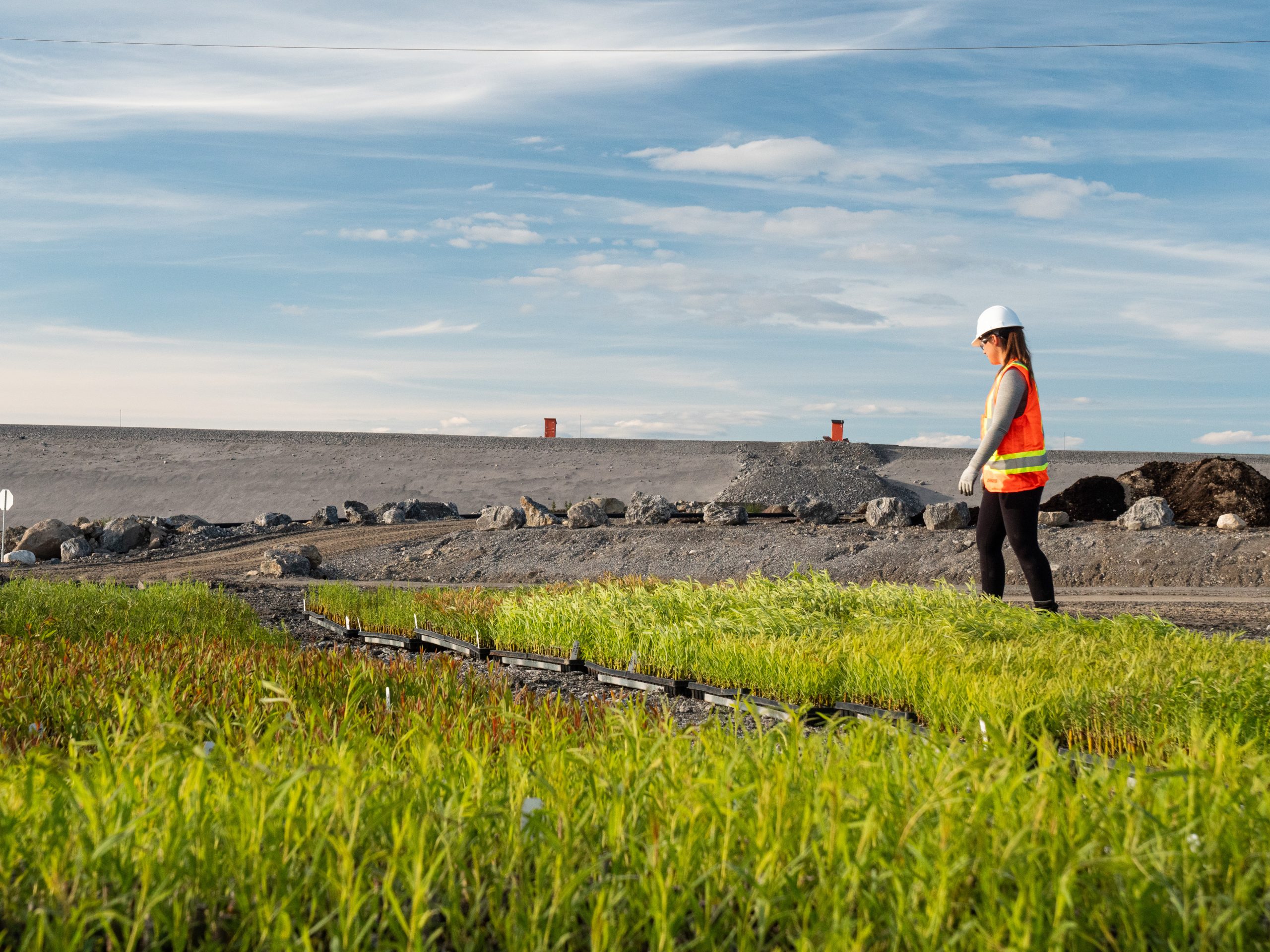In an industry where mining companies are increasingly required to reduce their environmental footprint, innovative approaches are emerging to improve the management and restoration of active sites. Among these, the use of fast-growing willow stands out as an effective solution to meet the needs for vegetation, organic substrate supply, and mine water management.
Since 2006, Ramo has been developing nature-based solutions to support companies in their environmental efforts. As a North American leader in willow cultivation, the company has invested several million dollars in recent years to position itself as a strategic player in the mining restoration field. Particularly established in Abitibi, Ramo now manages over 600 hectares of plantations and has a dedicated team of engineers and agronomists specialized in mine site restoration.
Ramo also collaborates with IRME UQAT-Polytechnique to develop new mine site restoration strategies. This work is part of a research project led by Marie Guittonny and funded by NSERC. At the same time, MISA supports Ramo in establishing its local organic substrate offering, thus contributing to the development of a supply chain tailored to the mining industry’s needs.
Mine site restoration largely relies on importing organic matter to recreate soils suitable for vegetation. Ramo offers a local, sustainable alternative: an organic substrate made from willow, specifically from chipped young willow branches known as wood ramial fragmented (BRF).
The basic concepts of BRF were developed in the 1970s and 1980s by a group of Quebec researchers led by Gilles Lemieux, a forestry engineer and researcher at Laval University. Since then, numerous studies have demonstrated its effectiveness in improving the fertility of disturbed soils by stimulating microbial activity and increasing the water retention capacity of soils.
The willows are harvested every three years and naturally regenerate without the need for replanting, ensuring a stable and renewable long-term supply. Unlike traditional amendments, BRF acts gradually by structuring the soil and facilitating plant rooting.
With over 70 varieties of willows tested and cultivated, Ramo has developed a unique expertise in adapting species to mining conditions. Moreover, willow plantations promote the return of biodiversity. Their canopy quickly attracts pollinators, small mammals, and birds, gradually recreating a habitat conducive to the recolonization of restored environments.

To make BRF accessible to mining companies, Ramo offers two supply solutions tailored to the realities of the sector:
Thanks to its specialized team and formulation capabilities, Ramo adapts its substrates to the specific needs of each mining project, ensuring effective and optimized amendments for vegetation.
Beyond their role in producing BRF, willow plantations, when planted directly on mining sites, offer an additional environmental benefit: they contribute to managing mining effluents by reducing the amount of water that must be treated before being discharged.
Two strategies are implemented:
By integrating these solutions, mining companies can improve their water balance, limit discharges to the environment, and optimize effluent management on their sites.

The use of willow crops for mine restoration is part of a circular economy approach, where the production of organic matter, effluent management, and vegetation are interconnected. By replacing imported inputs with locally produced renewable resources, this approach reduces costs and the environmental footprint of mining projects.
With its research and development expertise, local team, and established infrastructure, Ramo positions itself as a strategic player for mining companies seeking efficient solutions for site restoration.
These initiatives also align with the principles of the Canadian Towards Sustainable Mining (TSM) initiative, which promotes responsible practices in the mining industry, particularly in environmental management and biodiversity.
As regulatory requirements for mine site restoration become more stringent, nature-based solutions like those offered by willow are gradually becoming a key lever for more sustainable mining operations.
MISA Group is proud to…
For Immediate Release Rouyn-Noranda, QC…